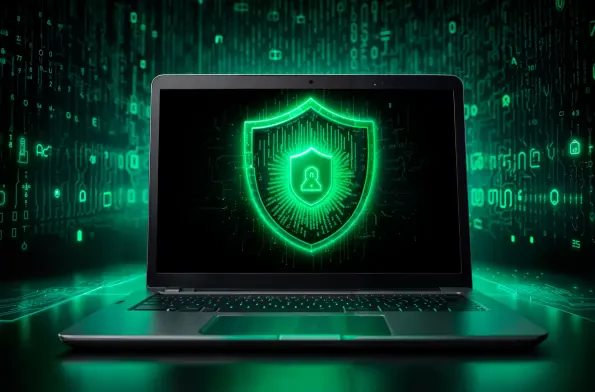Listen to the Article
Perimeter-based security is becoming increasingly inadequate as threat actors continue to target organizations from the inside, through their employees. To keep up with new advancements used by malicious actors, businesses must stay ahead of the trends through strong, more aggressive cybersecurity solutions.
The evolving threat landscape has shown many businesses that standard security methods are simply not enough. This has led to a shift from traditional to more adaptable, resilient, and proactive solutions, such as Zero Trust—a strict security model that trusts no user or application, whether inside or outside the network.
This article outlines how the capabilities of this security model surpass perimeter-based solutions and empower organizations to combat all cyber threats effectively.
Threat Vectors That Require Robust Security Solutions
As technology advances through innovations like artificial intelligence and machine learning, bad actors are adopting these tools to develop more sophisticated methods of evasion and infiltration. These advanced techniques are increasingly capable of bypassing traditional security solutions, underscoring the need for more robust defenses.
The popular attacks include:
Multi-vector attacks:
This method targets multiple entry points simultaneously using various attacks, such as phishing emails that lead to malware downloads and malicious websites. Traditional solutions are only prepared to handle one threat at a time and thus are insufficient in securing networks from all vantage points.
Advanced persistent threats:
These are long-term attacks designed to infiltrate a network and remain undetected for an extended period that could last months or years. While active in the system, the criminal is free to steal sensitive data and compromise critical systems and operations without being detected. Most traditional firewalls are insufficient in detecting these attacks, as once a user gains access to the network, there are no additional security checks.
Supply Chain Attacks:
This is an attack that targets vulnerabilities found in software, hardware, or services provided by third-party vendors. By embedding malicious code or backdoors into legitimate sources, criminals can exploit unsuspecting organizations whenever they use the corrupted software, hardware, or vendors.
Fileless malware:
This attack operates within volatile memory, using legitimate system tools and processes, like web browsers, to install and execute malicious code. Since this method does not use file-based artifacts, traditional antivirus solutions have no file to scan for signatures.
Since the development of these modern tactics, there has been an increased number of digital threats to both small and large businesses. In the United States, a cyberattack is reported every 39 seconds, totaling 2,244 daily, with nearly 43% of these attacks occurring in small businesses, which often lack adequate incident response mechanisms.
These statistics prove that single-layered solutions are insufficient against popular attack methods that infiltrate networks and attack from the inside. 99% of all cyberattacks can be prevented if multi-factor authentication or a security solution that employs a similar structure, such as the Zero Trust security model, is used.
Secure Access Management at Every Layer
Zero Trust is a security framework that serves as a comprehensive end-to-end strategy that not only provides access after initial verification but also regularly revalidates every request. It’s a security solution that monitors all traffic to an organization’s resources and networks through strict and continuous authentication of all security configurations before access is granted to users, devices, or applications.
The primary function of this strategy is to verify all identities that request access, including both human and non-human. It’s an effective cybersecurity model that actively addresses common modern-day cyber threats like AI malware, supply chain infiltration, and highly effective social engineering phishing attempts.
To ensure this function is followed, Zero Trust abides by these three main concepts:
Denies inherent trust
It assumes that every user who requests access to the network could be a hacker or a user with undetected malware in their system. It operates under the principle that no user or system should automatically be trusted or gain free access to organizational systems.
Conducts complete security
This solution provides a comprehensive solution for organizations managing large digital infrastructures, encompassing primary networks and cloud-based environments. These businesses are more susceptible to receiving breach attempts through ransomware or other malicious means. Zero Trust ensures the protection of both the organization and all users operating in different models and digital environments.
Consistently monitors
The multi-layered model conducts repetitive and continuous monitoring, not just at the point of entry, but also at different stages of the session. Consistent authentication is applied to ensure that continual access is only granted due to multiple zero result risk assessments.
Even if the access request is from a device inside the organization’s perimeter or a previously verified user or application, the security model still conducts thorough checks to ensure the request is authentic.
Zero Trust authenticates through identifying and explicitly verifying authentication attempts based on policy configuration and enforces least-privilege access. This is the minimal permission the model grants users, enough to perform only necessary tasks. The scope of access only broadens according to the tasks or responsibilities of users.
Through its strict methods, Zero Trust completely secures users, workloads, IoT devices, and B2B partners connected to the organization’s data and applications.
Security Gaps of Traditional Models
Traditional security only operates on defined network perimeters; it focuses on building defenses at the network’s edge through firewalls, VPNs, and other network security devices to keep what is inside the network perimeter safe and all malicious external activity out.
This solution has a narrow idea of what constitutes a security breach, as not all cyberattacks look the same, nor do they all trigger automated security reinforcements. Attackers often employ ML and AI to customize their phishing schemes in an attempt to adapt malware signatures and slip through undetected.
For example, if hackers obtained the credentials of a user who often operates within the secured perimeter, it would not flag the “user” as a threat, allowing cybercriminals to laterally navigate to other systems within the same subnet. This renders internal threats difficult to detect and mitigate, resulting in increased security risk.
These evolved, sophisticated methods have outpaced typical antivirus solutions, pushing enterprises to seek more robust and adaptive modern alternatives like Zero Trust to keep their information secure.
Maintaining a secure network environment becomes increasingly challenging when organizations scale their operations to a hybrid, cloud-based business environment. This puts stress on the network boundary, which would constantly need to expand and accommodate additional remote users, communication devices, SaaS applications, and partners who need access to the system.
Conclusion
Threat actors consistently identify and exploit emerging vulnerabilities within security frameworks to infiltrate enterprise networks and steal information, sometimes without triggering standard security systems. The limitations of perimeter-based security against modern cyber threats have become strikingly clear to organizations. Investing in durable security is no longer an optional upgrade anymore but an essential imperative. Zero Trust is a solution that is designed to not trust users, applications, or devices that request access to enter a network, even after access is granted. This model encourages businesses to rigorously verify every activity and enforce the least privileges to contain breaches if cyberattacks occur.



